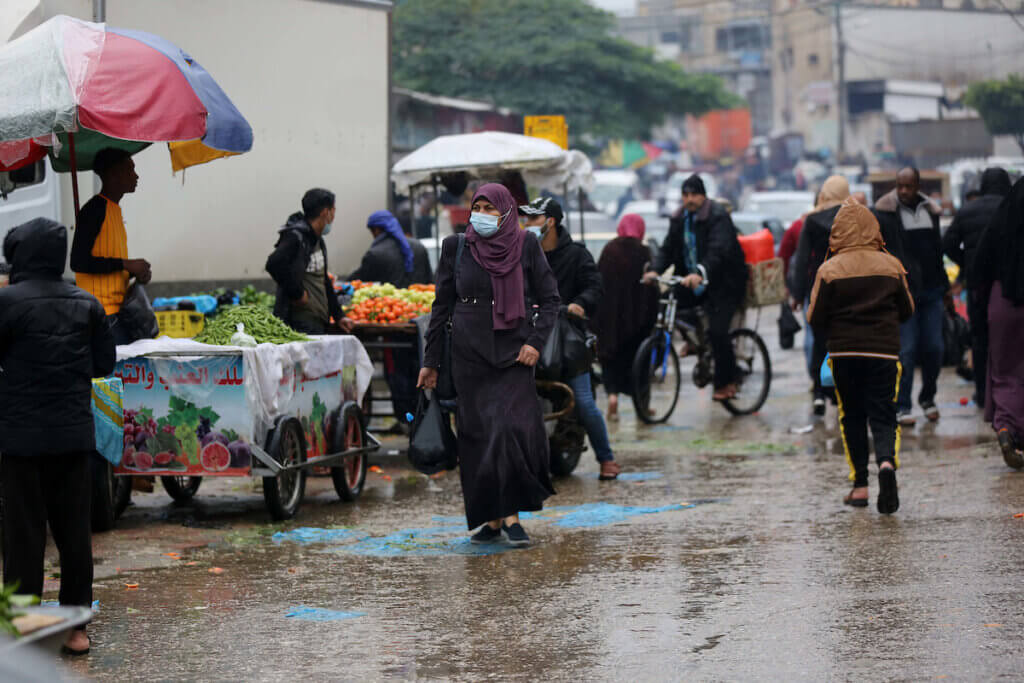Editor’s Note: The following is the latest issue of our special coverage newsletter of the COVID-19 pandemic in Palestine. You can sign up here.
The Latest:
- 135,356 Palestinians tested positive for COVID-19; 108,631 recoveries; 1,207 deaths
- Of those who tested positive 87,454 live in the West Bank; 15,744 live in East Jerusalem; 32,158 live in Gaza
- 370,152 Israelis tested positive for COVID-19; 344,372 recoveries; 3,057 deaths
Israel will begin its national vaccination campaign promising to inoculate 60,000 citizens a day, beginning on Saturday when Prime Minister Benjamin Netanyahu will be among the first to receive a shot, and do so on live television.
It’s a big moment that comes as the first set of countries are just starting to vaccinate, and preempts Israel’s own vaccine, which still has two more rounds of clinical trials to go before it can hit the market, according to an update from the Ministry of Defense.
We’ve covered the race to secure a vaccine in this newsletter in the past. Israel acquired 6 million doses from Moderna and 8 million doses from Pfizer (both requires two doses). It should have enough to cover its 9 million citizens, however, Palestinians in the West Bank and Gaza are seemingly still months away from a vaccine. What’s more at the moment there are only procurement plans to cover 20% of the Palestinian population, with an emphasis on those over 65, healthcare workers, and those with chronic conditions.
Around half of the confirmed COVID-19 cases for Palestinians in the West Bank, Gaza and East Jerusalem are under the age of 30.
The Great Race

In October we reported Palestine was accepted into the COVAX vaccine accelerator program, a $1 billion initiative funded by the Gavi Alliance that will disburse 700 million doses to 92 middle and low income countries.
Yet Associated Press reported this week not all of those 700 million are available, “the program has secured only a fraction of the 2 billion doses it hopes to buy over the next year, has yet to confirm any actual deals and is short on cash.”
What’s more, “Rich countries have already reserved about 9 billion of the estimated 12 billion doses the pharmaceutical industry is expected to produce next year.”
In the event that Gavi can buy enough vaccines, in order to get them on the ground, UNICEF, who is spearheading distribution, needs to upgrade the cold supply chain to store the vaccines in a temperature controlled environment locally. The AP’s reporting found at present time, there is only one refrigeration unit suitable in the West Bank.

The big picture: as we’ve established, it’s going to take Palestinians months to begin administering a vaccine and there’s no mechanism, or funding, to provide broad scale immunization. This is going to create stark contrast between how the pandemic impacts every aspect of life.
The AP hit the nail on the head: “Next year could bring a sharp divergence in the trajectory of the pandemic, which until now has blithely ignored the national boundaries and political enmities of the Middle East. Israelis could soon return to normal life and an economic revival, even as the virus continues to menace Palestinian towns and villages just a few miles (kilometers) away.”
Lockdown Expands, Again

Over the last week the number of new cases continued to rise by a third, with around a 35% positivity rate despite a drop by 6% in the overall number of tests administered. Grimly, mortality also increased with a 33% jump in the deaths compared to last week.
Gaza accounts for slightly more than one third of all of the known COVID-19 deaths, according to the World Health Organizations latest situation report.
For at least the third week in a row, the WHO found the West Bank and Gaza each hit record highs of daily new reported cases. The West Bank logged 1,598 cases on Tuesday and 1,015 cases yesterday.
From numbers to policy: With no vaccine in sight, the Palestinian governments in both the West Bank and Gaza are using the only tool at their disposal to attempt to slow the spread, lockdowns. This week, expanded restrictions were announced.
In the West Bank on Sunday, all schools will be shut down and converted to virtual learning, travel between governorates is banned for another two weeks, hair salons and private clubs are closed, and no indoor or outdoor dining at restaurants is banned. Delivery only.
In Gaza, a weekend curfew is in place and bans on gatherings and school closures will continue throughout the end of 2020.
 RSS Feed
RSS Feed















 December 19th, 2020
December 19th, 2020  Awake Goy
Awake Goy  Posted in
Posted in  Tags:
Tags: 













